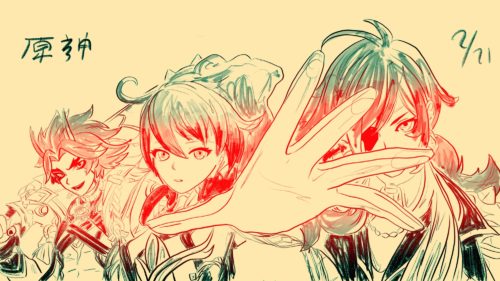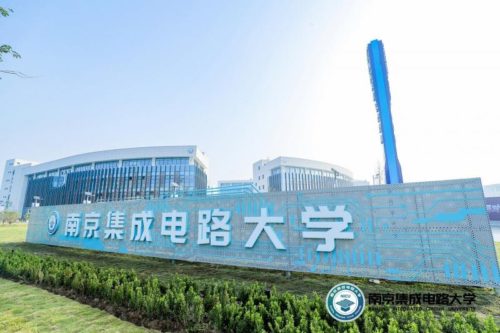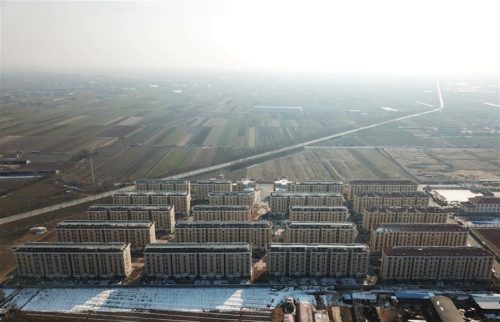Why is Nanjing demolishing its last historic neighborhood?
A history of the struggle to preserve the heart of China’s former capital city.

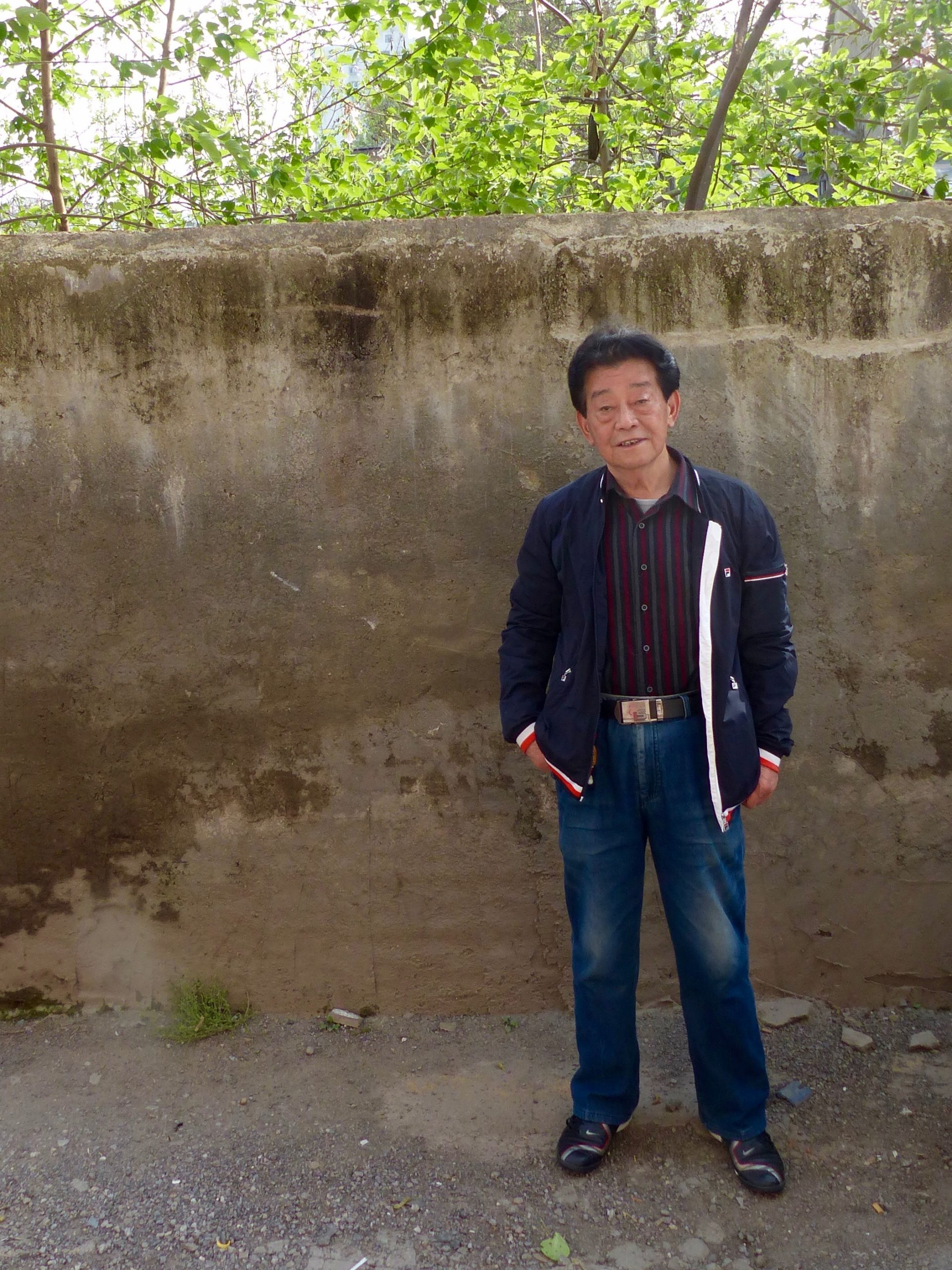
Nanjing, China — On a recent Friday morning in the Nanjing neighborhood of Pingshijie (评事街 píngshì jiē), Yang Guoshun 杨国顺 stood surveying the scene outside the cigarette and liquor stall on titular Pingshi Street that serves as a neighborhood gathering place. It was a warm early spring morning and people were out. Interwoven with the noise of electric scooters whirring down the ancient lane, cheeps emitted from birdcages and opera blasted from an elderly pedestrian’s radio. Passersby stopped to respectfully greet their old neighbor and share a cigarette and reminisce. Yang was reminded for a moment of what life had been like before the demolitions started.
Old neighborhood residents are fond of saying that in Pingshijie, “to walk three steps is to remember a literary allusion, to walk ten is to encounter an ancient story” (三步一个典故,十步一个故事 sānbù yīgè diǎngù, shíbù yīgè gùshì). This neighborhood first emerged as a flourishing center of commerce under Zhu Yuanzhang (aka the Hongwu Emperor, who lived from 1328 to 1398). Zhu founded the Ming dynasty in 1368 and made Nanjing his capital. Most of the street names are from this time: Down a few steps from where Yang stood, Pingshi Street intersects with Cloth Lane, which in turn is met by Silk Thread Alley in the east and Grain Storage Alley in the west. Meanwhile, Pingshi (评事 píngshì; “Evaluating Things”) Street is believed to have gotten its name from a mishearing of a word for fur or leather (皮饰 pí shì) pronounced in the Nanjing dialect.
The brothels of Ming dynasty Nanjing
A little farther south, where Pingshi Street meets Shengzhou Road — now the neighborhood’s southernmost periphery — Zhu Yuanzhang built a series of 16 state-owned brothels to reward his top ministers and generals. “The earth and sky is vast / from the Southern Tower the view is as far as the eye can see / this place has been prosperous since ancient times / in the material culture there are remnants of the Six Dynasties,” wrote one satisfied minister in an ode to his favorite pleasure house, according to a book on the history of Nanjing. But in the 1490s, a pious local official offended by Pingshijie’s open sensibility tore down one of Zhu Yuanzhang’s 16 brothels and replaced it with a Confucian school. A neighborhood merchant who had a long-standing feud with the official complained to the central government in Beijing about the demolition, suggesting that the project was offensive to the dynasty’s founding father, but his letter went unheeded.
The neighborhood came under scrutiny once again during the time of Hai Rui (1514–1587), the Ming dynasty official famous for his honesty and incorruptibility, who during his posting to Nanjing went undercover in Pingshijie to bust a profiteering rice merchant. A few hundred years later, when an army of anti-Qing rebels from the south who called themselves the Taiping captured Nanjing and made it their capital, Pingshi Street hosted a large Taiping weapons storehouse. (In the 1980s, developers laying a foundation for a new factory on the site were surprised to discover a cache of 19th-century cannons.) And when Nanjing became the capital one last time from 1927 to 1937 under Chiang Kai-shek and the Nationalists, Pingshijie saw an influx of journalists and artists drawn to the neighborhood for its vitality and rich history.
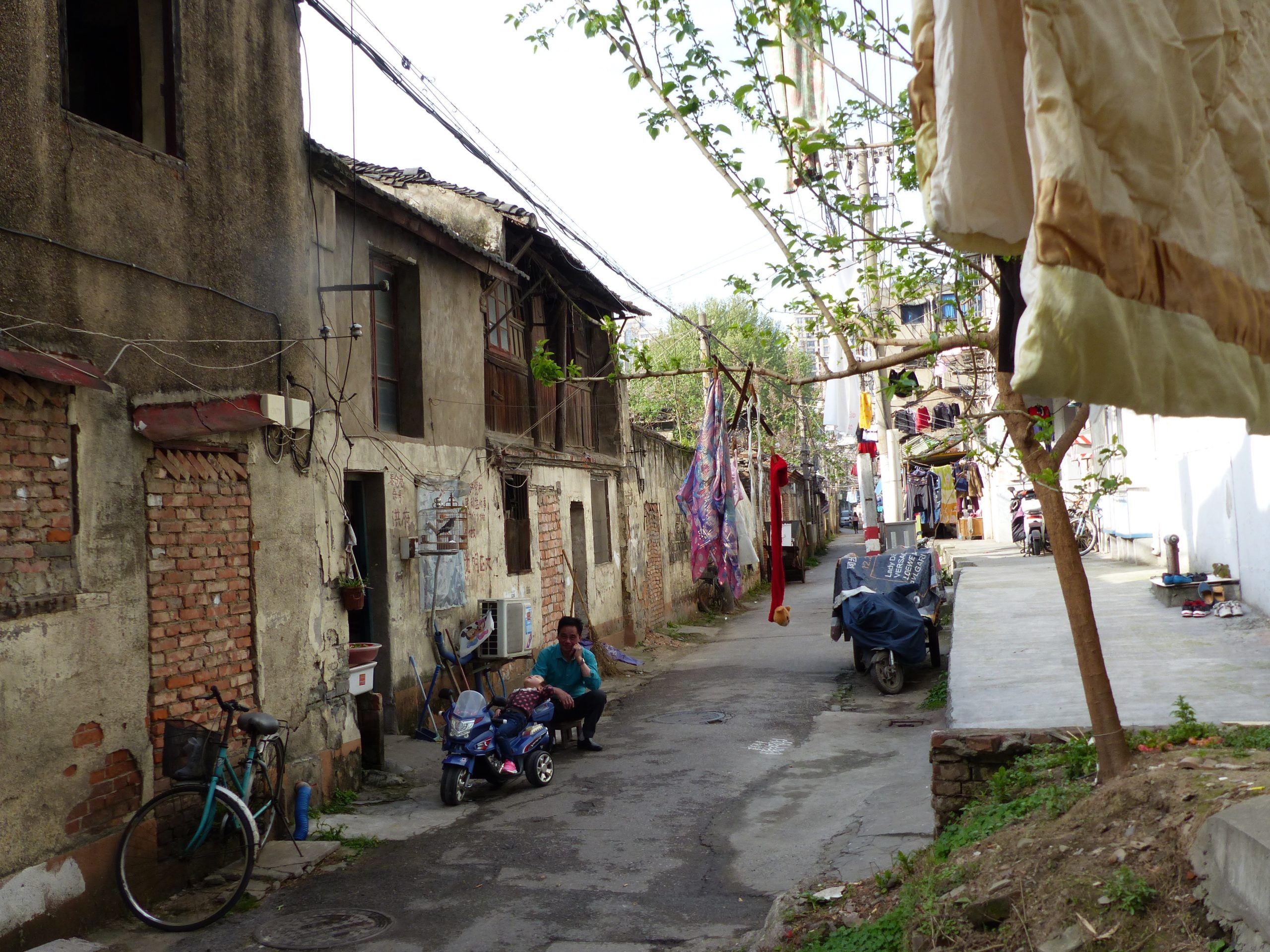
All those moments will be lost in time
All of this history, Yang expected, would be forgotten with the erasure of his neighborhood. “These are things only some of us old people know now. Young people don’t know anymore,” he sighed.
It was in this neighborhood that Yang, who is 72 years old, was born in the last days of the Japanese occupation to parents of the Muslim Hui minority. From the front of their tiny Republican-era home, 29 Qianzhang Lane, Yang’s family ran a small restaurant that the young Yang helped out in until, during the Cultural Revolution, he and millions of other city youth were “sent down” to the countryside to learn from the peasants. Yang worked the fields in northern Jiangsu Province for 10 years, where he got married and had his first child. After Mao died and Yang and his comrades were allowed to come home, he moved back into 29 Qianzhang Lane, where he took over his parents’ store and started to raise a family. It was in the small home that Yang took care of his elderly father and mother and watched them die. And it was in 29 Qianzhang Lane he expected he would die, too — until 2008, when the notices appeared.
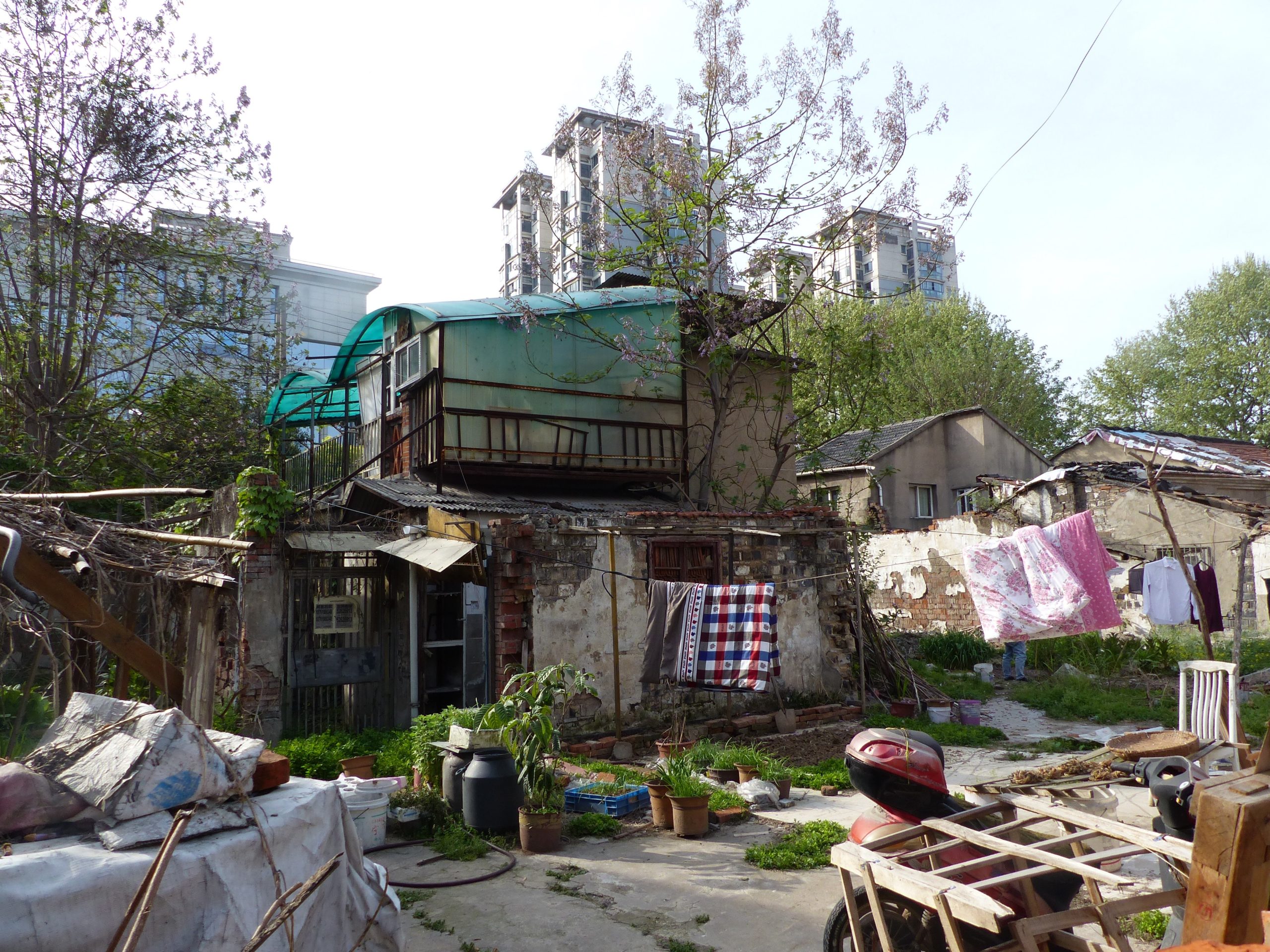
Yang was devastated, but not surprised. The demolition of homes and forced relocation of residents is so common in China that it is almost exclusively referred to by the pithy shorthand chaiqian (拆迁 chāiqiān, literally, “destroy-move”). The breakneck development and profit chasing of the reform era had vacuumed up entire neighborhoods all over the country with little regard to historical pedigree. In accordance with the converse of the old axiom that “poverty is the preservationist’s best friend,” Nanjing, the capital of wealthy Jiangsu Province and one of the richest cities in China, saw swathes of ancient city fabric erode rapidly. By 2003, it was estimated that 90 percent of original residences in this ancient capital had already disappeared.
In the razed remains of the old city, developers planted sleek office buildings and enormous luxury malls. The elegant French poplars and Chinese firs that once lined every boulevard disappeared in favor of more car lanes. Yang wonders if Pingshijie — which, he proudly notes, survived the Japanese sacking of the city miraculously intact — will fall to the lust for the new. “In other countries — Australia, Germany — they love their own culture and they try to preserve it. But China is doing just the opposite,” Yang said, looking beyond the jumble of Qing and Republican-era homes to the forest of colorless apartment towers that in decades past had supplanted neighborhoods like his own. “It’s like if everyone wore the same clothes.” For 30 years, he had watched the neighborhoods of Old Nanjing fall, one after another: first the Confucius Temple; then the Bell Tower area; then, in 2006, the redevelopment of the ancient neighborhoods along the southern Nanjing City Wall, which by 2009 had infiltrated Pingshijie, the most famous and storied of the Old South City urban villages.
A campaign to stop the wrecking ball
The campaign to save Pingshijie was one of the most high-profile anti-chaiqian campaigns in recent Nanjing history. Just after the first demolitions started at the tail end of Spring Festival 2009, a group of 29 prominent scholars, artists, and architects, including the 81-year-old former director of the Nanjing Museum, Xue Bing 薛冰, wrote an open letter to the National Cultural Relics Bureau, warning that, “if this destruction continues, it will spell the end of the historically and culturally rich Old South City.” Residents, meanwhile, struck back with a coordinated campaign of letter writing, petitioning, and Cultural Revolution-style dazibao (大字报 dàzìbào, “big-character poster”) graffiti. (“CHAIQIAN GANG, GET OUT OF OLD SOUTH CITY,” read a typical slogan.) In addition, a group of 128 residents got together a petition that they signed in their own blood and prepared to take to Beijing. However, as is a frequent occurrence in China for particularly sensitive petitions, the group was intercepted at Nanjing’s south train station by city government agents and taken to a facility where they were abused and held for many days with little food and water.
Although the coverage in the tightly controlled local Party media was scarce, the impassioned campaign drew the attention of market-oriented publications and national outlets, including Xinhua News Agency, which descended on the neighborhood to interview charismatic locals. A picture of Yang’s door, which he plastered with poems and slogans he had written himself, appeared in newspapers as far-flung as Hong Kong, Korea, and Germany. Yang keeps the copies of his protest posters in a thick folder along with the dozens of letters he wrote to the Central Cultural Relics Protection Bureau — between 80 and 90, he estimates. An article in the liberal Guangzhou Weekend Times in 2009 entitled “A Battle Destined for Defeat” quoted Xue Bing as saying, “It’s not that there’s nothing that can be done to save this neighborhood — it’s that the government is not willing to do it.” In response to the public outcry, in June of that year, then premier Wen Jiabao responded with instructions to the city to stop. He also sent a team of representatives from the National Cultural Relics Bureau and the Ministry of Housing and Urban-Rural Development to Nanjing, who spent three days investigating the situation in Pingshijie and concluded that the city was not within its rights to continue the chaiqian without consent from the central government. But within a matter of days, like a persistent infection, the demolitions started again — ultimately leveling two-thirds of the neighborhood’s home and clearing out a third of the population. In 2013, a second huge wave of displacement swept through the neighborhood, taking a further third of the population with it.
A community dispersed and needles in the streets
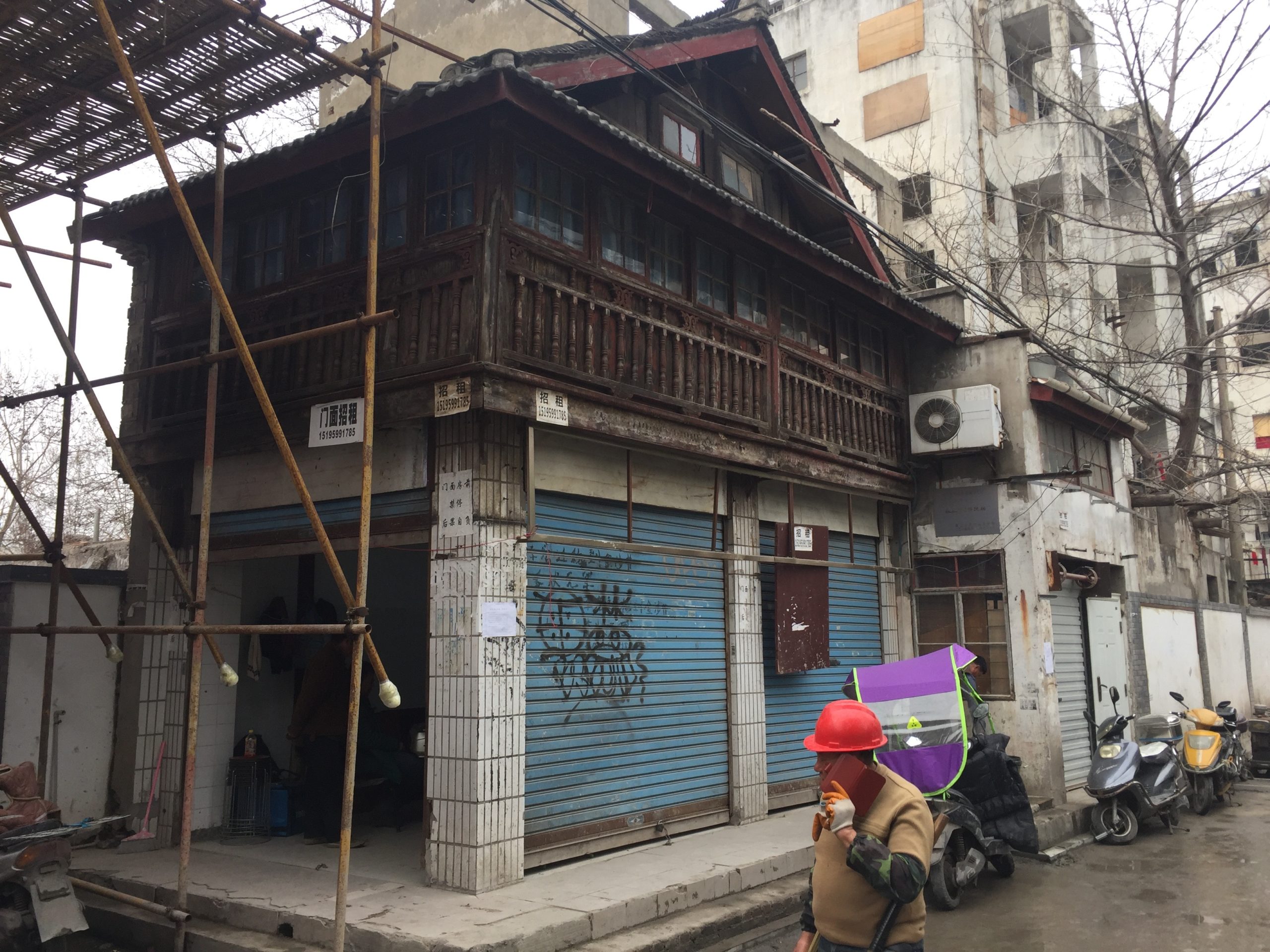
These days, Pingshijie is less of a neighborhood and more of a shell of one. Its defining feature is absence: of people, homes, shops. Of the 4,000 households that once squeezed into these eight hectares, only an estimated 190 remain. They are mostly old-timers whose families owned their homes before the Communist takeover and had their property returned to them after reform and opening. Many are surrounded on all four sides by the debris of the homes of neighbors who have long since taken their measly payouts and moved to government-allocated housing in the far suburbs. Meanwhile, architectural details attesting to the neighborhood’s rich history — a Ming dynasty well cap, an engraved archway plaque — have been stolen by thieves hoping to sell them as antiques. On a stroll around the neighborhood, Yang points out a Qing dynasty home whose roof tiles were taken away one night by the chaiqian unit. Like the rest of the neighborhood, the home has been left to rot, its fate completely vulnerable to the elements.
Shortly after the second big wave of demolitions in 2013, the holdouts noticed they had new neighbors. They quickly found out the chaiqian unit was renting their old neighbors’ vacated homes to migrant workers, who had been instructed by the chaiqian unit to not interact with residents or speak to the media. Since then, the holdouts and the new arrivals have been living in a uncomfortable coexistence. In the past couple of years, there’s been another new development: Residents have started to notice discarded needles and syringes scattered among the debris. Whether the drugs have been brought by their new neighbors or by dealers taking advantage of the neighborhood’s decrepitude to fly under the radar, the holdouts are not sure.
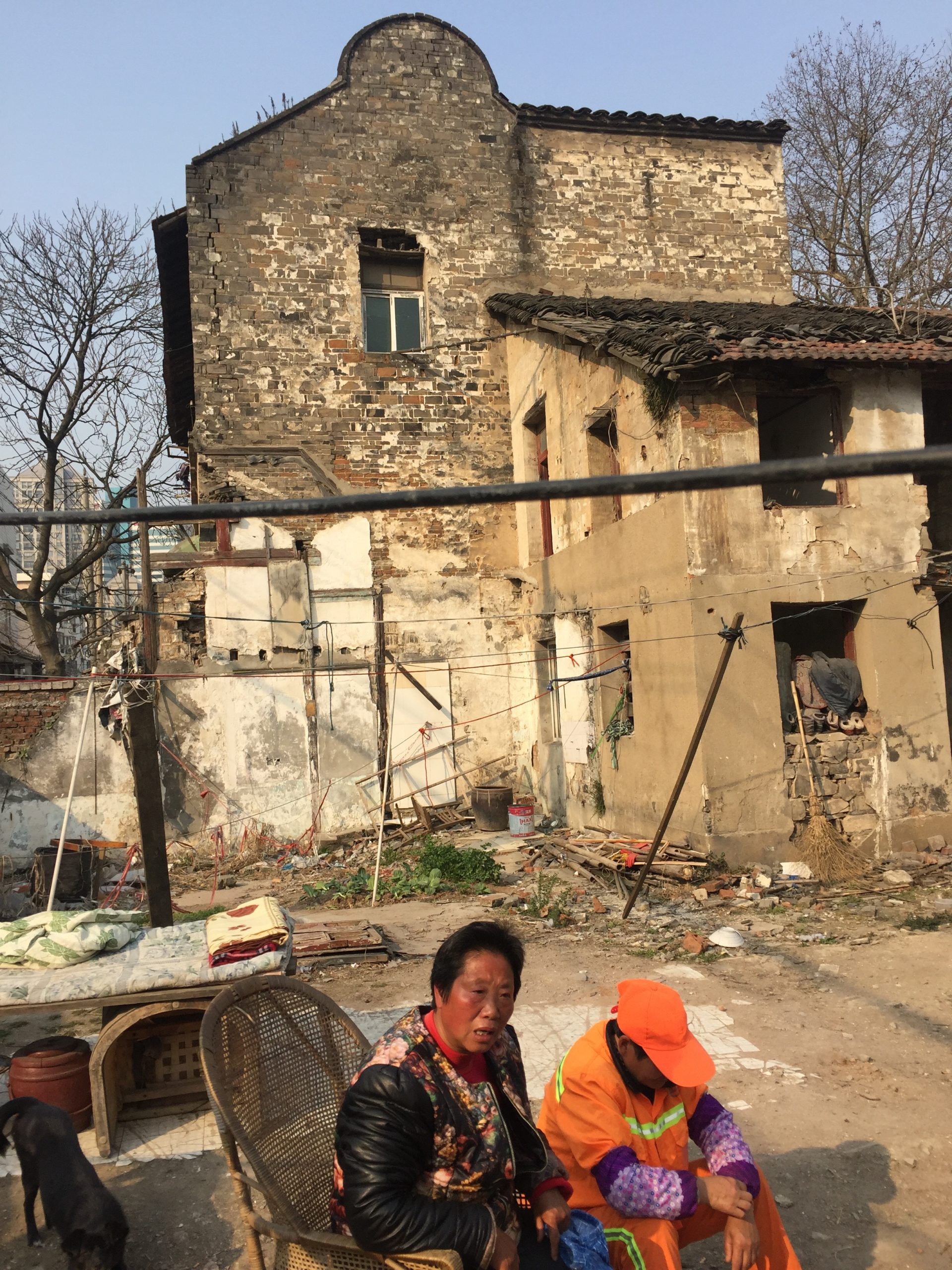
Chen Suying 陈素英, 63, a retired schoolteacher, is among the small group of residents who refuse to leave. Throughout the demolitions, she has continued to occupy the two-story Republican-era house on Pingshi Street in which her parents and grandparents once operated a successful leather shoe business. Chen is fiercely proud of her home — only successful merchants, she points out, could afford to keep a shop and live on Pingshi Street. But her neighborhood has fallen a long way since those prosperous times. Chen complains that since the city and most of its old inhabitants abandoned Pingshijie, trash accumulates in the street uncollected and flies swarm the lane in ever-denser clouds in the summer. Meanwhile, she tolerates constant harassment from the chaiqian gang: bottles crashing through her windows in the middle of the night, human feces materializing at her doorstep in the morning. In the place where Chen’s neighbor’s house used to be, there is now a field of rubble. Here, Chen sits on a stool and points to the north wall of her home, which was damaged when the chaiqian unit tore down her neighbor’s house. A couple of years ago, Chen was walking out her door when a brick fell from the exposed wall and hit her on the head. She called the police and chaiqian unit and demanded compensation; after several months of navigating a recalcitrant bureaucracy, she was given 2,000 yuan ($320) to cover medical fees.
“Even the Kuomintang didn’t try to chaiqian our neighborhood. It’s only when the Communists came we got destroyed,” grumbles Chen.
Still, Chen will not leave. She has no interest in moving to one of the newly constructed apartment towers in the far suburbs, a two-hour ride on public transport from her current location. The suburbs have no energy, no opportunity, she says. Despite the devastating blows the neighborhood has incurred, the spirit of entrepreneurship lives on: Amidst the debris, old residents sell buns and snacks in front of their homes; a famous halal potsticker restaurant draws people from all over the city; and more than a few smoky mahjong parlors are tucked into sparsely furnished storefronts. Across the street from Chen’s house is a tiny, two-chair barbershop that a friend of hers opened a couple of years ago. Chen walks across the street most days to visit with her friend and the clients, mostly neighborhood residents. In the suburbs, Chen points out, there’s no way her friend could open a barbershop and make a little extra money. Plus, in the suburbs, there’s no infrastructure — subways, hospitals. Chen, like most of the Pingshijie holdouts, has a story of a neighbor who moved to the outer district of Lianhuacun, got sick, and died before they could make it to a hospital in the city.
“This house is from my ancestors. I should be able to stay,” she said.
Why?
Why, despite an intervention by the second-highest ranking leader of China and substantial national media coverage, was Pingshijie still reduced to its current state? This is the question that continues to haunt residents as well as scholars who study this neighborhood. Residents believe the answer is pretty simple: Like many other social ills in modern China, the destruction of their ancient and culturally rich neighborhood can be explained by the profit-chasing and corruption of local government.
They have good reason to believe this is the case. Since the tax-sharing reform in 1994, local governments in China have been obligated to send a huge percentage of their revenue to the central administration; for short-term cash infusions, they often look to land sales. In China, all urban land is still technically owned by the state. Developers gain the right to build on land by purchasing 70-year land leases from the city government. And with the astronomical rise of the urban real estate market that followed the privatization of housing, the selling and reselling of land has become a huge source of revenue for local governments. It is, needless to say, a situation not conducive to architectural preservation, as the city’s oldest residences tend to occupy the city’s most valuable, centrally located land. Though each municipality has its own Cultural Relics Protection Bureau, the bureau’s efforts are usually fruitless in the face of ambitious local officials intent on generating more tax revenue and growing GDP.

The cynical view of this situation is that the central government is exploiting the local governments, getting the lower-level officials to do their dirty work while also serving as scapegoats for some of the more egregious social problems in modern China; in return, the central government promises to look the other way at the locals’ more dubious practices, including corruption. But if the resisters believe this is the case, they have chosen not to express it. In fact, as is common with so-called “rightful resisters” in China, they have predicated their strategy on an expressed belief in the innate benevolence and fairness of the Communist Party. This is evident in their petitioning as well as in the graffiti from 2009 that remains on the walls in Grain Storage Alley: a few yards down from “CHAIQIAN GANG, GET OUT OF OLD SOUTH CITY,” a casual passerby is greeted with several red spray-painted iterations of “LONG LIVE THE CHINESE COMMUNIST PARTY.” The use of the slogan is far from sarcastic: Resisters hope that their faith, or at least their expressed faith in, the nation’s core institution will earn the attention and favor of those at the top who have the power to change their fate. Though the holdouts freely curse the chaiqian gangs and the local government, they are very cautious when they discuss the Communist Party, even going out of their way to clarify that the central government is good.

A professor in China who studies urban planning, and who asked that his name not be used, said that the rightful resisters’ hopes may be misplaced. The first thing to understand, he said, is that although China is unitary by constitution, in reality, it more resembles a federalist system; the country is long removed from the rigid verticality of the Mao era. “Because the country is so advanced, it’s hard for the central to control everything at a local level. Local governments can just create their own niche for their local development growth.” This is especially easy, he added, because of the enormous power local governments have to set their own rules by rewriting local bylaws. Almost everything the city government has done throughout this process, he emphasized, is legal. This is why the many resisters who have studied up on local bylaws and brought lawsuits against the city are often disappointed by the results. To date, residents have not won a single lawsuit of the dozens they have brought.
“The local government does not want to be seen as illegal,” the professor said.
He then gave the example of the Regulation of Expropriation of and Compensation for Housing Properties on State-Owned Land, a national law that was passed in 2011 that tightened the requirements for expropriation and, for the first time, established a minimum compensation for residents. The Nanjing government, however, took advantage of the final clause of the law, a couple of sentences declaring that if the demolition permit had been issued before 2011, the local government was not obligated to follow the regulations. Because the demolition permits had been issued before 2011, the residents of Pingshijie enjoyed virtually no legal protections in the process and were awarded only measly compensations.
Mistakes were made
There is some evidence the city government realizes it has made a mistake, even if this realization has come a little late. In 2012, the Nanjing City Urban Planning Bureau released a “2010–2020 Plan for the Preservation of History and Culture of the Old City,” which called for preservation on the basis of the three principles of “comprehensive preservation,” “holistic preservation,” and “vigorous preservation.” Like most documents issued by the Urban Planning Bureau, the language of the plan sounds almost purposefully vague. “Vigorous preservation,” for instance, is defined as “emphasizing the inheritance and rejuvenation of history and culture, reinforcing the organic integration of modern city functions with historical-cultural resources, advancing sustainable use of cultural and historical resources, and promoting the vitality of the old city.”
What is certain is the future of Pingshijie will involve some kind of history-related, tourism-focused development. At the same time the Nanjing city government was overseeing the second wave of displacement in 2013, it renounced the 2011 plan, which had called for a complete emptying out of the remaining homes, and hired an urban planning firm to draft a new, progressive plan for the neighborhood. Under the 2013 “Plan for Preserving the Appearance of Pingshijie Historic District,” residents would be allowed to stay and structurally sound remaining buildings would be renovated rather than demolished.
The holdouts are only vaguely aware of the plan (many are old and don’t use WeChat or the internet), but they have noticed the signs of another change coming. In 2014, plaques declaring “IMMOVABLE CULTURAL RELIC” started to appear on the facades of the remaining homes, including those vacant and crumbling from years of neglect. (In a recent study of the neighborhood, Nanjing University architectural historian Zhou Xueying 周学鹰 found that a quarter of the historic homes that should have plaques did not have one, and a third of the plaques incorrectly identified the structure’s vintage.) A telephone pole across from the concrete wall where Yang Guoshun’s house used to stand bears a notice with a QR code inviting passersby to learn more about “beautiful Imperial Nanjing.”
Pingshijie residents only need to go as far as the far eastern corner of their neighborhood to find a possible model of what their future holds. This is where in the mid-Qing dynasty, a scholar called Gan Xi 甘熙 built a large mansion that was famed throughout Nanjing for its collection of books. His descendants continued to inhabit the residence for the next two centuries, surviving the fall of the Qing, the Japanese invasion, and even the Cultural Revolution, during which the Gan family — who by all accounts were unusually kind to their neighbors — were deemed “enlightened landlords.” In the 1990s, the Gans as well as the dozens of households that had been assigned housing in the ancient residence under the Communists left after the state declared the home would become a cultural museum. The structure persisted until 2006, when the redevelopment of Old South Nanjing began in earnest. The city demolished the home and in its place erected a facsimile of the mansion in which it installed a museum about the history of Old Nanjing as well as high-end retail, including a Starbucks.
Pingshijie residents were not impressed. Yang refers to the project as a “forgery.” Chen Suying says the so-called Ganxi Ancient Residence lacks the vitality that Pingshijie, however tenuously, still holds to. “It doesn’t consider the common people. It should have renqi [人气 rénqì],” she said, using a word that invokes the character or personality that’s generated by human inhabitation. And indeed, on a recent warm Sunday afternoon, the Ganxi replica house appeared completely deserted. Not only were there no inhabitants — the place seemed completely devoid of shoppers and tourists.
Not everyone is so displeased with the Ganxi house. A 2016 report on Pingshijie commissioned by the local urban planning bureau and undertaken by Nanjing’s Southeast University had a more generous assessment, finding that “in the execution of this project, high standards of architectural appearance and texture have been realized” and “whether it be city residents, neighborhood dwellers, or experts, everyone has expressed approval toward the preservation of Pingshijie’s special characteristics,” also stating, however, that the project’s “ability to showcase intangible culture is not strong” and “there is not enough energy.” The report was even less enthusiastic about the non-renovated sections of Pingshijie, noting, “In terms of historic and cultural heritage, preservation efforts have not attained expected results; the appearance of the historic architecture has seriously deteriorated” and that “the intangible cultural heritage of the area has eroded almost to the point of extinction.”
Late last year, the telltale signs of construction appeared again, this time on Shengzhou Road. A famous 100-year-old roast duck shop that regularly has lines going around the block was moved two blocks west; in its place rose a vaguely Republican-era-looking wall featuring Party propaganda about the “Chinese Dream.” Just last month, a couple of crumbling two-story Qing dynasty storefronts disappeared behind a layer of scaffolding and green building wrap (“To hide what they’re doing,” grumbled Yang).
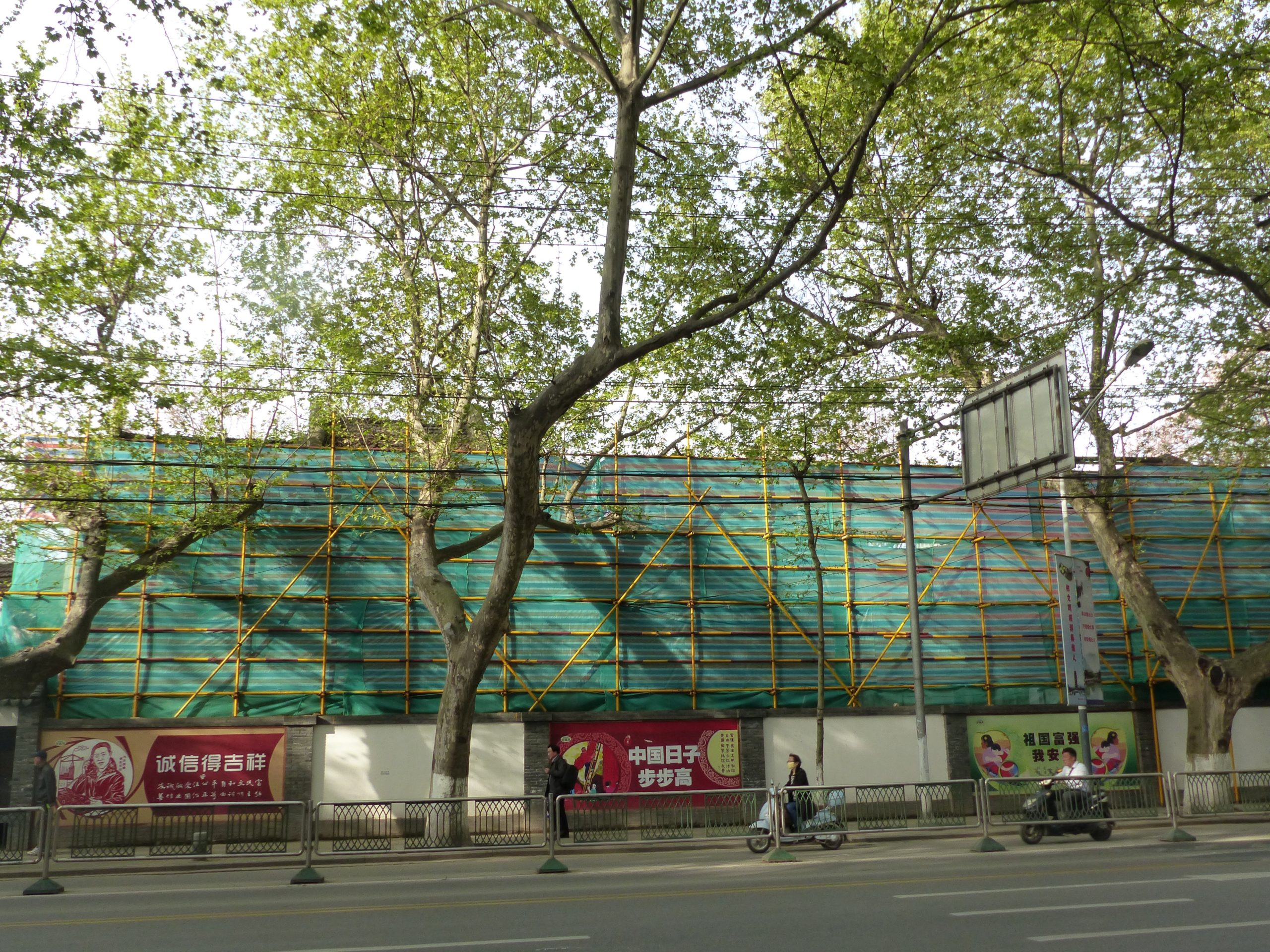
Chen is not optimistic about the coming changes. She thinks whatever the city is doing, it will probably mean the end of her way of life. But for the time being, she will stay put.
“If I’m going to die early, I would rather die here,” she said.
— With research by Sun Wenze


